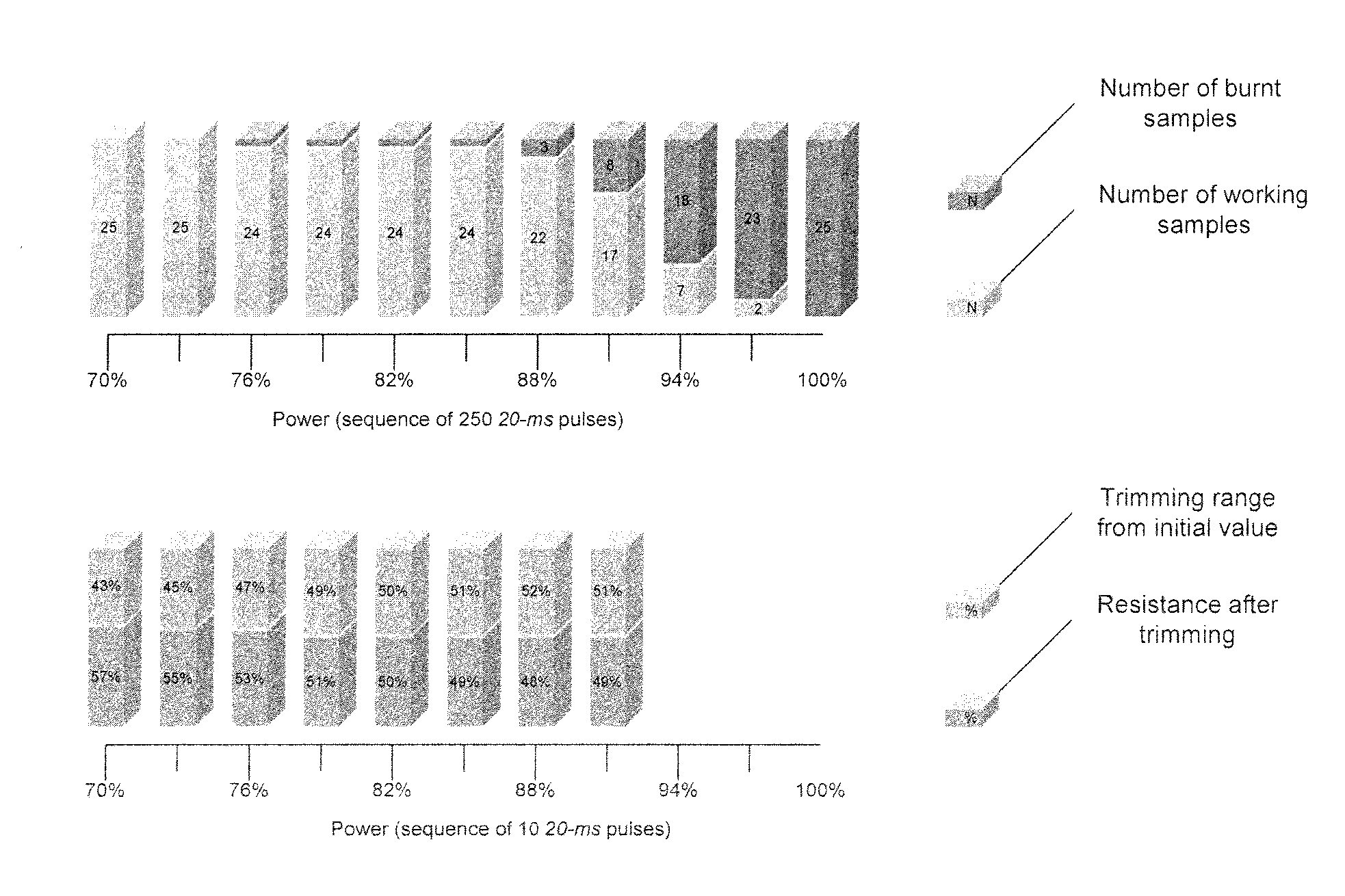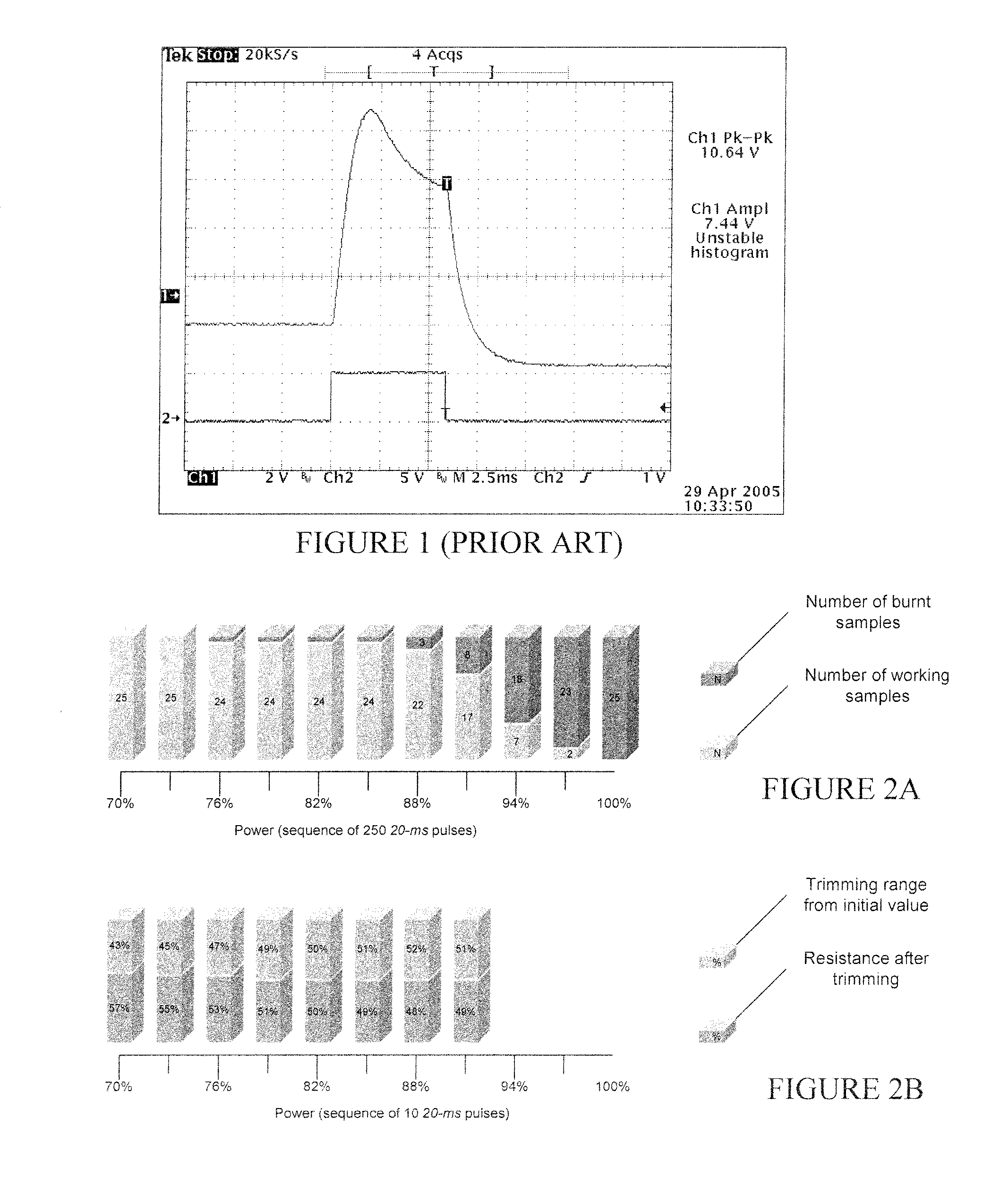Power-measured pulses for thermal trimming
a technology of resistors and pulses, applied in the direction of resistor details, resistor mounting/supporting, instruments, etc., can solve the problems of inability to ensure that the temperature induced by subsequent pulses will have a specific relationship, and the instability of resistors can become unstable during trimming signals, etc., to achieve constant power dissipation and unpredictable instability of resistors
- Summary
- Abstract
- Description
- Claims
- Application Information
AI Technical Summary
Benefits of technology
Problems solved by technology
Method used
Image
Examples
Embodiment Construction
[0027]This invention proposes a method to mitigate the above-described problem of heater-resistor stability. Thermal trimming is fundamentally controlled by temperature, and typically there is no reliable temperature sensor in the trimming zone (because typically the heater-resistor and functional-resistor may be both unstable at trimming temperatures, and because design of another explicit temperature sensor would raise further inconvenience). Therefore, the resistors, microstructure, and system to apply heating pulses, are co-designed, taking account of the temperature-coefficients (magnitude and sign) of resistance of the heater, heating-pulse-voltage, pulse-current and pulse-power, speed of resistance changes in the heater-resistor during thermal trimming, relative temperature ranges of thermal trimmability of the heater-resistor and functional resistor, as well as thermal inertia and thermal isolation of the microstructure(s).
[0028]Pulses of constant electric power are used for...
PUM
 Login to View More
Login to View More Abstract
Description
Claims
Application Information
 Login to View More
Login to View More - R&D
- Intellectual Property
- Life Sciences
- Materials
- Tech Scout
- Unparalleled Data Quality
- Higher Quality Content
- 60% Fewer Hallucinations
Browse by: Latest US Patents, China's latest patents, Technical Efficacy Thesaurus, Application Domain, Technology Topic, Popular Technical Reports.
© 2025 PatSnap. All rights reserved.Legal|Privacy policy|Modern Slavery Act Transparency Statement|Sitemap|About US| Contact US: help@patsnap.com



